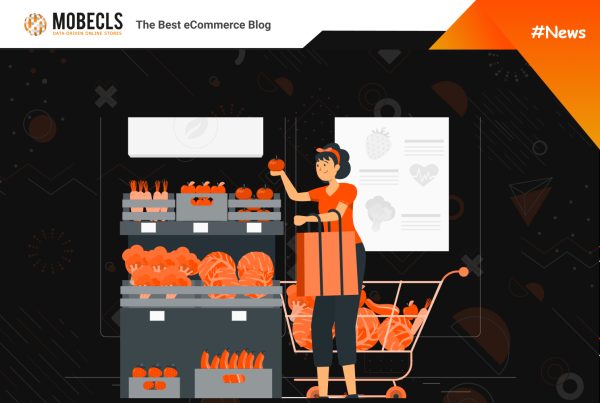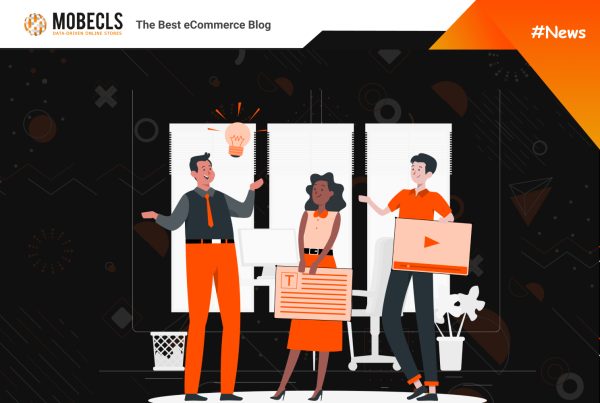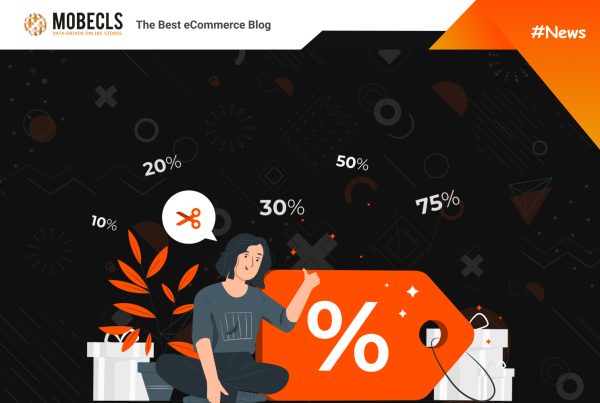As we approach the biggest shopping events of the year, it’s crucial to kickstart your preparations early. That’s why we’ve put together a complete Black Friday Preparation Checklist to ensure you’ll be able to make the most of this shopping frenzy.
Black Friday Preparation Checklist
Plan Ahead and Set Clear Goals
Black Friday isn’t confined to just one day; it’s the kickoff to a holiday shopping season that stretches all the way to Christmas and New Year’s. By initiating preparations well in advance, you have the time to develop a well-thought-out plan. This includes defining your target audience, determining your promotional offers, and crafting a comprehensive marketing strategy. Rushing this process can lead to hasty decisions and missed opportunities.
Setting clear goals and objectives for Black Friday is essential. It provides you with a roadmap for your preparations and helps you measure the success of your efforts. Your goals might include a specific revenue target, a certain number of new customers acquired, or increasing the average order value.
- Focus: Setting clear goals keeps your team focused on what needs to be achieved. It prevents distractions and ensures that everyone is working towards a common objective.
- Measurement: Without clear goals, it’s challenging to measure the effectiveness of your Black Friday efforts. Well-defined objectives allow you to track your progress and make data-driven decisions.
- Resource Allocation: Goals help you allocate resources effectively. Whether it’s budget allocation, staff assignments, or technology investments, having clear objectives guides your resource allocation decisions.
- Adaptability: Clear goals make it easier to adapt to changing circumstances. If you know what you want to achieve, you can adjust your strategies and tactics as needed to stay on track.
- Motivation: Goals provide motivation and a sense of purpose. When your team knows they are working towards a specific target, it can boost morale and drive them to put in their best effort.
Inventory Management
Inventory optimization ensures that the right products are available in the right quantities. This is particularly vital during peak shopping seasons like Black Friday. When popular products are in stock and readily available, you can meet customer demand efficiently. This minimizes the risk of stockouts and missed sales opportunities, ensuring you capitalize on the high customer traffic and increased demand.
Inventory Optimization Checklist:
- Prioritize Best-Sellers: Focus your inventory efforts on your best-selling products. These items are likely to generate the most revenue on Black Friday, so ensure they are well-stocked.
- Safety Stock for Popular Items. Maintain a safety stock for popular products to account for unexpected spikes in demand. Black Friday can bring a surge in orders, so having a buffer ensures you won’t run out of stock.
- Use a Just-In-Time Approach. Consider a Just-In-Time (JIT) inventory approach for some items. This strategy involves ordering products as close to the sale date as possible to minimize storage costs while ensuring availability.
- Talk to Suppliers in advance. Ensure they can meet your increased demand during the Black Friday period. Negotiate favorable terms for expedited shipping if necessary.
- Monitor Slow-Moving Items. Identify slow-moving or obsolete inventory and consider running promotions or bundles to clear them before Black Friday. This frees up valuable storage space for in-demand products.
- Offer Pre-Orders. Allow customers to pre-order high-demand items before Black Friday to gauge interest and secure sales. This can help you allocate inventory more effectively.
Performance
Black Friday is a high-stakes shopping event, and customers have little patience for slow-loading websites. A fast website provides a seamless and enjoyable shopping experience. Slow websites frustrate users, leading to high bounce rates and potential cart abandonment. Thus, performance is one of the most important items on any Black Friday preparation checklist.
A slow website can drive potential customers away to competitors who offer a quicker, more responsive shopping experience. Fast-loading pages give you a competitive edge, higher search rankings, retention and conversion rates.
Black Friday Preparation Checklist: Performance
- Load Testing: Conduct load testing to simulate high traffic and ensure your website can handle the increased load. Identify performance bottlenecks and address them proactively.
- Content Optimization: Compress images and other media files to reduce load times without compromising quality. Minimize the use of large files like videos or implement lazy loading to load them only when needed.
- Content Delivery Network (CDN): Implement a CDN to distribute website content across multiple servers globally, reducing server load and improving load times for users worldwide.
- Browser Caching. Enable browser caching to store static resources like images, stylesheets, and scripts on users’ devices. This reduces the need to reload these assets upon revisiting your site.
- Minimize HTTP Requests: Reduce the number of HTTP requests by simplifying your website’s design and using CSS sprites to combine multiple images into one.
- Mobile Responsiveness: Ensure your website is fully responsive and mobile-friendly to accommodate users on various devices.
- Code Optimization: Minimize unnecessary code, and consider using minification techniques to reduce the size of HTML, CSS, and JavaScript files.
- Hosting Infrastructure: Check that your hosting infrastructure can handle the expected traffic. Consider upgrading your hosting plan if needed.
Make sure you’ll be able to provide customers with excellent user experience during Holiday Sales
User Experience
A well-designed, easy-to-navigate website captures visitors’ attention and encourages them to stay longer. During Black Friday, when competition is fierce, retaining visitors is crucial. Black Friday shoppers often make quick purchase decisions. Fast load times, intuitive navigation, and straightforward design all contribute to faster decision-making.
Strategies for Improving Website Navigation and Design:
- Intuitive Navigation: Simplify your website’s navigation menu to make it easy for visitors to find products. Use clear and concise labels and consider dropdown menus for categorization.
- Search Functionality: Implement a robust search function with filters and auto-suggestions to help users quickly locate products. Display prominent search bars on all pages.
- Mobile Optimization: Prioritize mobile responsiveness, ensuring that your website functions smoothly on smartphones and tablets. Test your mobile experience rigorously.
- Clear Product Pages: Each product page should include high-quality images, detailed descriptions, pricing, and availability. Use tabs or accordions to organize information neatly.
- User-Friendly Checkout: Simplify the checkout process with a clear, step-by-step format. Offer guest checkout options, and include progress indicators to keep users informed.
- Streamlined Forms: Reduce friction by keeping forms concise and only requesting essential information. Implement auto-fill for common fields to save users time.
- Visual Hierarchy: Use visual cues like contrasting colors, font size, and spacing to highlight important information, such as CTAs and product discounts.
- A/B Testing: Continuously test variations of your website’s design and navigation to identify improvements. Use A/B testing to refine elements that contribute to a better UX.
SEO
SEO (Search Engine Optimization) is pivotal in ensuring your website ranks well in search engine results, driving organic traffic to your Black Friday deals and products. Here’s why SEO matters:
- Increased Visibility: Optimized product listings, category pages, and content can place your website higher in search engine rankings, increasing its visibility to potential customers.
- Targeted Traffic: SEO helps you attract highly relevant traffic. Users searching for specific Black Friday deals or products are more likely to convert into customers.
- Cost-Effective: Organic traffic from SEO is cost-effective compared to paid advertising. It provides a steady stream of visitors without the ongoing expense of paid campaigns.
Tips for Optimizing Product Listings and Category Pages:
- Keyword Research: Identify high-converting keywords related to your Black Friday deals and products. Use keyword research tools to find the most relevant and competitive keywords.
- Optimized Titles and Descriptions: Craft compelling, keyword-rich titles and descriptions for your product listings and category pages. Highlight unique selling points and Black Friday discounts.
- High-Quality Images: Use high-resolution images that showcase your products. Include alt text with relevant keywords to improve image SEO.
- User Reviews: Encourage customer reviews and ratings. Positive reviews can improve your search engine ranking and build trust with shoppers.
- Mobile Optimization: Ensure that your product listings and category pages are mobile-responsive. Many Black Friday shoppers browse and buy from mobile devices.
- Fast Loading Times: Page speed is a ranking factor. Optimize your website’s performance to reduce bounce rates and improve SEO.
Marketing & Promotion
Black Friday is one of the most competitive shopping events of the year. To stand out and maximize sales, it’s essential to employ a multi-channel marketing approach, create a content calendar, and draw inspiration from effective marketing campaigns. Here’s how to execute a successful Black Friday marketing strategy:
Marketing Channels to Consider:
1. Email Marketing:
- Importance: Email marketing remains a powerful tool for reaching your existing customer base with Black Friday promotions and exclusive offers.
- Strategy: Send teaser emails leading up to Black Friday, countdown emails, and follow-up emails for abandoned carts. Personalize content and segment your email list for more targeted messaging.
2. Social Media Marketing:
- Importance: Social media platforms offer a direct line to your audience, enabling you to build excitement, engage with customers, and share promotions.
- Strategy: Create eye-catching visuals and videos to showcase your Black Friday deals. Use relevant hashtags, run paid ads, and host contests or giveaways to boost engagement.
3. Pay-Per-Click (PPC) Advertising:
- Importance: PPC advertising on platforms like Google Ads and Facebook Ads allows you to target potential customers actively searching for Black Friday deals.
- Strategy: Create ad campaigns with compelling ad copy, relevant keywords, and attractive ad extensions. Optimize your ad spend and monitor performance closely.
4. Content Marketing:
- Importance: Content marketing, including blog posts, guides, and videos, can provide valuable information to shoppers and draw organic traffic.
- Strategy: Develop informative content around Black Friday shopping tips, gift guides, and product recommendations. Include internal links to product pages.
5. Influencer Marketing:
- Importance: Collaborating with influencers can help you reach new audiences and build trust among their followers.
- Strategy: Partner with influencers in your niche to create authentic and engaging content promoting your Black Friday deals.
Examples of Effective Black Friday Marketing Campaigns
Amazon’s “Countdown to Black Friday”: Amazon builds anticipation by launching a “Countdown to Black Friday” campaign with daily deals and limited-time offers leading up to the main event. This approach keeps customers engaged and returning to the platform.
Sephora’s Exclusive Early Access: Sephora offers its loyalty program members early access to Black Friday deals. This creates a sense of exclusivity and rewards loyal customers, encouraging them to shop during the sale.
REI’s “OptOutside” Campaign: REI famously bucks the Black Friday trend by closing its stores and encouraging customers to “Opt Outside” and enjoy the outdoors. This unique approach aligns with their brand values and garners significant attention and goodwill.
Bottom Line
Starting early is essential to ensure that your eCommerce store is fully prepared and optimized for Black Friday. By having a Black Friday Preparation checklist, you can address potential issues, fine-tune your strategies, and build excitement among your audience.
However, it’s equally crucial to remain adaptable. Black Friday is a dynamic and highly competitive event. Customer behavior, market trends, and unexpected challenges may arise. Being flexible and willing to adjust your approach based on real-time data and customer feedback will help you make the most of this lucrative shopping event and stay ahead of the competition.





